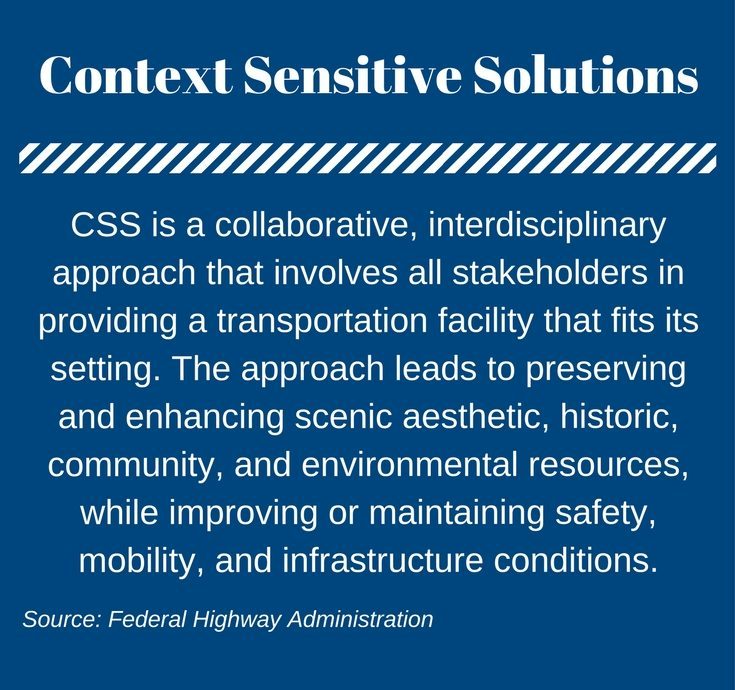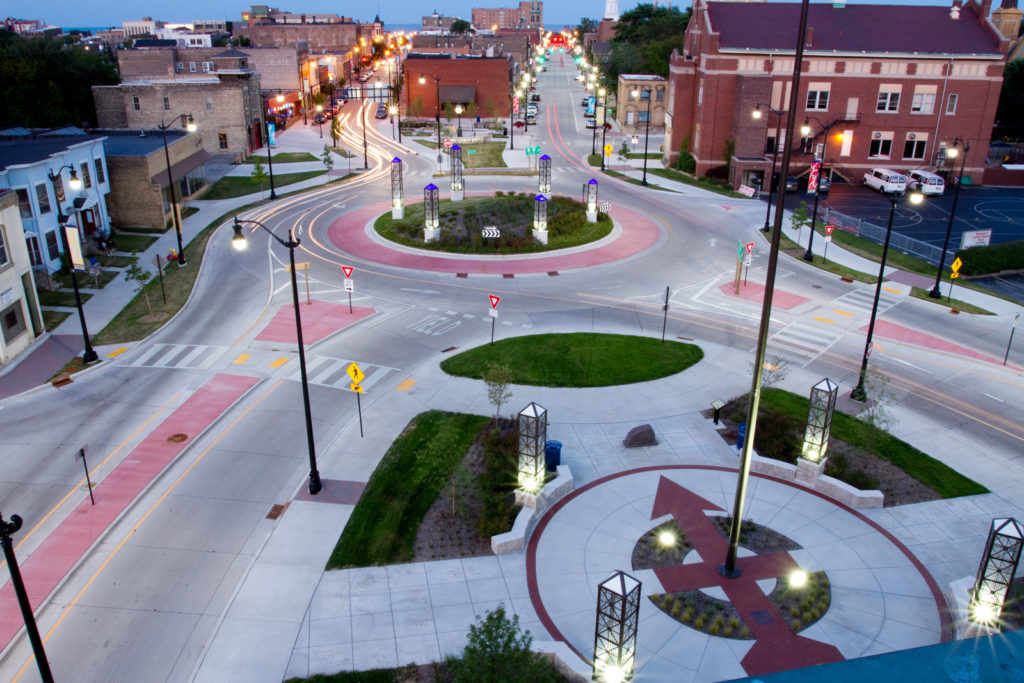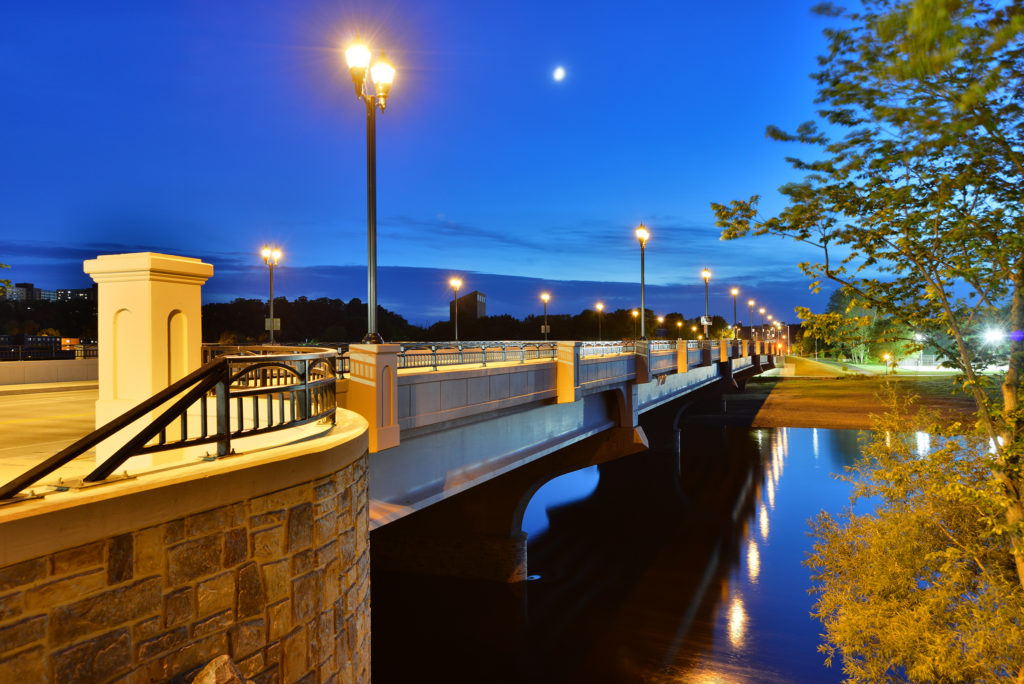Context Sensitive Solutions: Effective Design Through Collaboration
For transportation engineers, design doesn’t happen in a vacuum. Many variables must be considered to make sure the final product makes sense in its community. This could mean the addition of bike lanes, sidewalks, or maybe the inclusion of decorative lighting. Who’s making these decisions? For most projects, many stakeholders are involved, each with unique wants and needs. In an effort to include all relevant parties and to foster the most buy-in, transportation engineers and the industry as a whole use a practice called Context Sensitive Solutions.

What is Context Sensitive Solutions (CSS)?
Context Sensitive Solutions is an approach to transportation design that involves all stakeholders. It aims to preserve or enhance both environment and community while maintaining safety and mobility, making sure the final product best fits its chosen setting.
What does that mean for engineers?
Simply put, it means more meetings. Discussion starts early with affected parties, from elected officials to business owners, with emphasis placed on collaboration. This approach moves beyond standard public involvement to include a diverse interdisciplinary group bringing knowledge from both their professional background and personal experience. CSS comes into play early in the project, when evaluating alternatives and making initial design decisions. As designs become more detailed, the conversation keeps everyone informed.
How is the context defined?
Understanding the contexts that come into play for a given project is an important first step when using the CSS approach. The simplest way to think about what contexts are relevant is to identify any segment or behavior that might be affected within the community. Here are some examples of things to consider.
- Functionality: What is the function of the proposed transportation facility?
- Natural environment: Is there a large natural feature, like a river, to be accounted for?
- Social environment: What is the community’s perception of the project area?
- Transportation behavior: How are people traveling in this area? Is there a lot of bicycle traffic?
- Economic environment: Does the intended project impact local businesses?
- Cultural characteristics: What features does the community value? Could this project change or enhance them?

The Federal Highway Administration (FHWA) has an extensive resource for additional information on CSS from case studies to applying the approach, including the following principles and outcomes.
Four guiding principles
- Strive toward a shared stakeholder vision to provide a basis for decisions.
- Demonstrate a comprehensive understanding of the project context.
- Achieve consensus through continued collaboration and communication.
- Focus on developing effective transportation solutions that preserve and enhance community and natural environments.
Expected project outcomes
- Be in harmony with the community and preserve the environmental, scenic, aesthetic, historic, and natural resource values of the area.
- Be safe for all users.
- Solve problems that are agreed upon by a full range of stakeholders.
- Meet or exceed the expectations of designers and stakeholders, thereby adding lasting value to the community, the environment, and the transportation system.
- Demonstrate effective and efficient use of resources (people, time, budget) among all parties.
Ken Voigt, PE, a senior traffic engineer at Ayres Associates, is in his 51st year of providing traffic engineering services to clients. Safe street operation is nearly impossible without quality traffic engineering. Ayres Associates offers a variety of traffic engineering services with in-house engineers committed to creating great communities.



Post a comment: